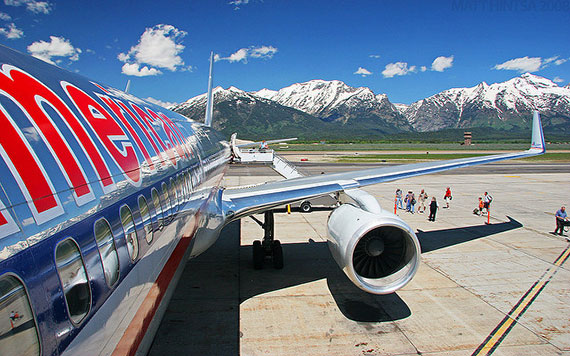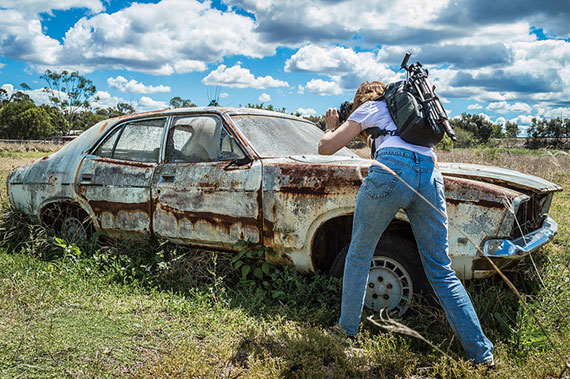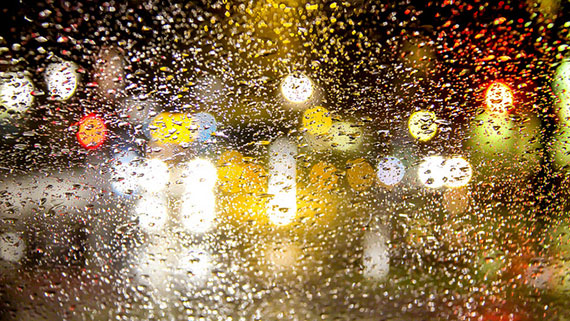Travelling with photographic equipment can difficult, but travelling without photographic equipment could be considered a waste of a journey by any photographer who truly loves taking pictures, so here are some handy tips that should take some of the stress out of travelling with your camera equipment.

Photo by Matt Hintsa; ISO 200, f/14.0, 1/100-second exposure.
It may seem like the most obvious piece of advice in the world, but if you are flying carry your camera onboard as hand luggage to avoid damage or loss. If you still use film them remember when you go through metal detectors, ask the attendant to hand-screen your rolls of film. It will help if you carry your film in clear canisters or remove it from its packaging and place it in clear plastic bags. However, if you can buy film at your destination, consider waiting until you arrive to buy it. It will at least make part of your trip easier for going through airport security screening devices.
Do not pack unprocessed film in luggage that will be stored in the cargo hold. The scanning equipment is stronger than the ones used for hand luggage and your film may well be damaged. Check your airline’s website to find out about hand luggage policies when travelling overseas, as some small airline operators do not allow you to carry luggage onto the plane with you.
Digital memory cards are not affected by x-rays, but magnetic devices could damage them. Conveyor belts may cause problems due to powerful magnets in the motors; although the risk is slight it is advisable to place your camera as far away from the beginning of the belt as possible.
If you’re travelling by car in a hot climate, keep your camera inside when you’re driving so it will stay cool and always remember to carry it with you when you leave your car; it can easily be stolen out of the boot (or trunk).

Photo by darkday; ISO 100, f/7.1, 1/200-second exposure.
It takes only a couple of seconds for anyone to take an unattended camera bag so always, keep your eye on your equipment. If you need to put your bag down, at a hotel reception or by your side at a coffee shop, it is a good idea it place your foot through the straps as a ‘distraction thief’ may get your attention focused on something but cannot so easily get you to walk away and forget your bag without the strap tripping you up and reminding you it is there. Dangling a camera from your neck is not such a good idea either; it’s very easy to cut a strap with a quick cut of a sharp knife and snatch the camera. When walking with my camera I wrap the strap three or four times around my wrist and clasp the last section of the strap in my fist, then I am ready to take a photograph but the strap cannot be cut and the camera snatched.
Think about what you’re going to do about storing digital images before you go on your trip. Personally, I prefer memory cards and in my Canon 5D slots I use two large memory cards, each capable of storing over 1000 RAW files. Lugging around a computer or portable storage devices is a hassle I try to avoid. Although portable storage devices keep getting smaller and smaller and more convenient.
Make sure you insure your equipment; even if you have an insurance policy in place already it is still worth checking with your insurance company just what will be covered and in what circumstances you can make a claim. Insurance companies are notorious for finding a way out of compensating clients for the loss of equipment in case of theft or damage. It has been known for an insurance company to ask for every item to be listed that was stolen, i.e. Camera, lens, lens cap, flash, diffuser, two memory cards, USB cable, and bag, then charge 200 excess for each listed item that was stolen as each item listed is a separate claim. As you can see from my short list the excess to be paid in the event of your camera bag being stolen is 1800, which for some cameras is more than the cost of the equipment lost. Check your policy, especially if the insurance is cheap, but even if you have paid a lot, still check the policy carefully.
Unless you know your camera inside and out, take your manual with you. Just pack it in your luggage. Make sure you take all your cords, etc. with you, but remember to check the insurance Terms and Conditions. If may need to bring an electric plug adapter if you are travelling overseas, remember to check this before you go. Bring one for your car too; if you’ll be doing a lot of shooting in the field it can be very useful.

Photo by Susanne Nilsson; ISO 6400, f/5.0, 1/6-second exposure.
Protect your camera from inclement weather and avoid leaving your gear in extreme heat or cold. If it rains unexpectedly, the very least you should do is get your camera under an item of clothing to shield it from the worst of the rain.
If it’s cold, keep your camera warm with your body heat to avoid condensation. If condensation does occur, remove the battery and memory card and keep the compartments open until they are full dry. If you take your camera back outside with condensation inside, it may freeze or even short when the power is turned on. Protect your lens by using a UV filter.
Take equipment you’re familiar with using. Travelling isn’t the time to try out new equipment; if you want get good results do your practicing before you leave. Travel light with a good bag and don’t bring every lens or body you have “just in case.” I never travel with more than three lens 50mm f/1.4, 24-70mm f2.8 and 70-200 mm f/2.8 which I find adequate for all eventualities. Obviously your range of lenses will depend on the type of photography you intend to do as well as your budget.
Finally if you’re going overseas, declare all your photo equipment to customs officials at the airport before you leave so you will not have to prove ownership when you return home thus avoiding little problems such as being presented with a bill for import duty that you then will need to contest.
But ultimately, have fun and fill your cards with wonderful travel photos.
About the Author:
William Johnston is a professional photographer providing wedding photography and portrait photography throughout Bristol, Wedding Photographer Bath and Somerset, the South West, Birmingham and the West Midlands, Leicester and Leicestershire, London and the home counties.
Like This Article?
Don't Miss The Next One!
Join over 100,000 photographers of all experience levels who receive our free photography tips and articles to stay current:






I have a pdf version of the camera manual on my phone and even some tips I found on this site
A tip I’ve never used yet with camera gear yet, but if you must check the bag, and its legal in your locals, pack a starter pistol in your checked bag. FAA/TSA regulations will require it be handled as a handgun. The baggage handlers take much better care of the bags, with better tracking, hold for pickup and you can lock them with non-tsa locks, as they check the bag at drop off instead of later.
Obviously your mileage will vary, but google traveling with guns
Hey, thanks for these tips. It’s not always simple to pack all the equipment and walk around with it. But you gave me some nice ideas in this post :) Thanks!
Good article and helpful comments. Another possible tip: since I usually travel in-country with a smartphone and everywhere with a small tablet, I have the manuals for all of my equipment downloaded onto both for easy access and so I don’t have to lug manuals around. Even out of country, my smartphone (which is US-only) is a small and easy platform to access the manuals when I’m out shooting.
I second Andy H’s remark – I also use a Pacsafe CarrySafe 100 camera strap. I also have one of Pacsafe’s wrist straps for it.
I have adopted a simple rule in regards to air travel. If I can’t carry it into the cabin with me, it stays home. Anything stowed in baggage is subject to theft from the most dishonest handlers on Earth, here in America. I also have a one thousand mile rule, if within that I drive!
I like the suggestion of using a gps device that can be placed in luggage so you can track it if lost. Also, i use a camera bag (lowepro aw650) that is right at the airlines guidelines for overhead luggage. So that helps too.
A great thing mentioned in the supplementary note is the Pelican Case. Though it’s not necessary to get a Pelican per se, having some sort of hard waterproof case is great for travelling. It lets you keep everything nicely in one large box, and in the eventuality it does rain, or if there’s a sandstorm (who know’s what mother nature will throw at you), the case’s airtight seal ensures that your camera equipment will remain safe.
You stated “Dangling a camera from your neck is not such a good idea either; it’s very easy to cut a strap with a quick cut of a sharp knife and snatch the camera.”. I have a safer solution.
I use the PacSafe Carrysafe® 100 anti-theft camera strap. This strap has a cable running though it that makes it slash proof. Not the most comfortable strap, but I sacrifice comfort for security any day.
I found mine at an REI store, or you can get it online from PacSafe http://www.pacsafe.com/www/index.php?_room=3&_action=detail&id=170
Andy
Really well written. I guess you meant 32 GB not Mb